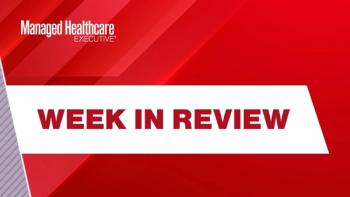
Price Transparency and Insurers' Compliance to These Rules
MHE spoke with Matt Parker, vice president of Products at Kyruus and HealthSparq, about the recent price transparency rules that went into effect, who they apply to and compliance improvement by insurers.
Below is a brief excerpt of the conversation with Parker, which has been edited for length and clarity.
Q: The price transparency rules have recently gone into effect. Can you briefly thumbnail them, share who they apply to and where these prices will be posted?
A: The milestones for the rules are kind of threefold. The first is the release of the machine readable files or the MRFs, which are data files. Data dumps have negotiated rates and out of network allowed amounts for a payer, a provider or health plans' entire network.
These files are really not meant to be used by an end user. These are really specifically for researchers, app developers, that sort of thing as baseline data extract of the rates that payers will pay for, for items and services. Starting on Jan. 1, 2023, those data will be added to capabilities that are available in a self service tool for health plan members behind a login, which will, for a moment, cover 500 shoppable items and services, allowing users to look for the costs and their out of pocket expense for those items and services. In 2024, those plans and payers will be required to do that same capability for all items and services that they cover under their benefits.
Q: Hospital price transparency rules and compliance have been spotty. There early indications insurers will do better. Do you think insurers will be better at complying? If so, why? And if not, why not?
A: I do think payers are more motivated to comply with the rules. At one level, the likelihood of the penalties being meaningful on the payer side are significantly higher.
We do know from interviews and articles written and published, a lot of hospitals made sort of a conscious choice about cost benefit in terms of developing the price transparency, data updates, versus the the penalties that were being applied and sort of made made choices based on that.
We work with over 100 health plans. In talking with most of those, we're hearing everyone's intending to comply with the rules.
Transparency is really important for payers, it's an important part of the service they provide to their members in terms of funding care. Eighty-eight percent of the people that we interview are expecting that their payers are going to provide transparency, so it isn't member expectation that they have to meet, which is again, sort of somewhat different than the hospital context.
And we do know that a fairly sizable number of people report differing care because of lack of price information, which again, can have downstream cost implications for payers. We also know the value of transparency for the payers is is is pretty high.
Most payers already have some sort of transparency tool and positioning in place. So this really is an evolution of an existing offering as opposed to something completely new for most of the payers we work with.
Newsletter
Get the latest industry news, event updates, and more from Managed healthcare Executive.

















































